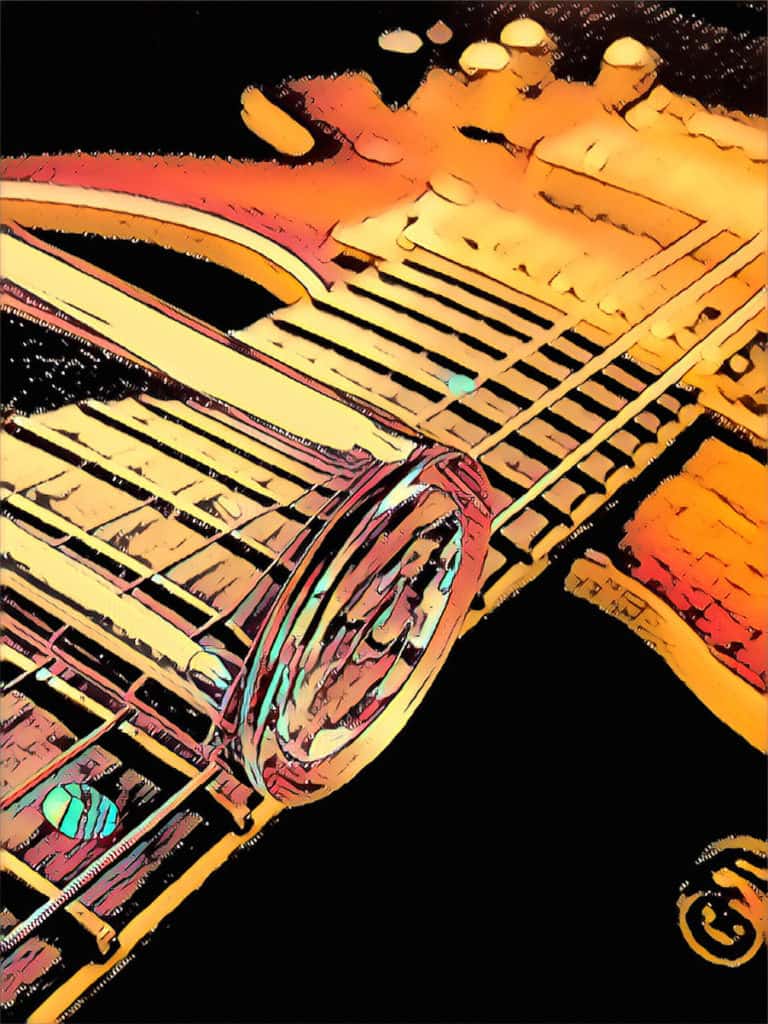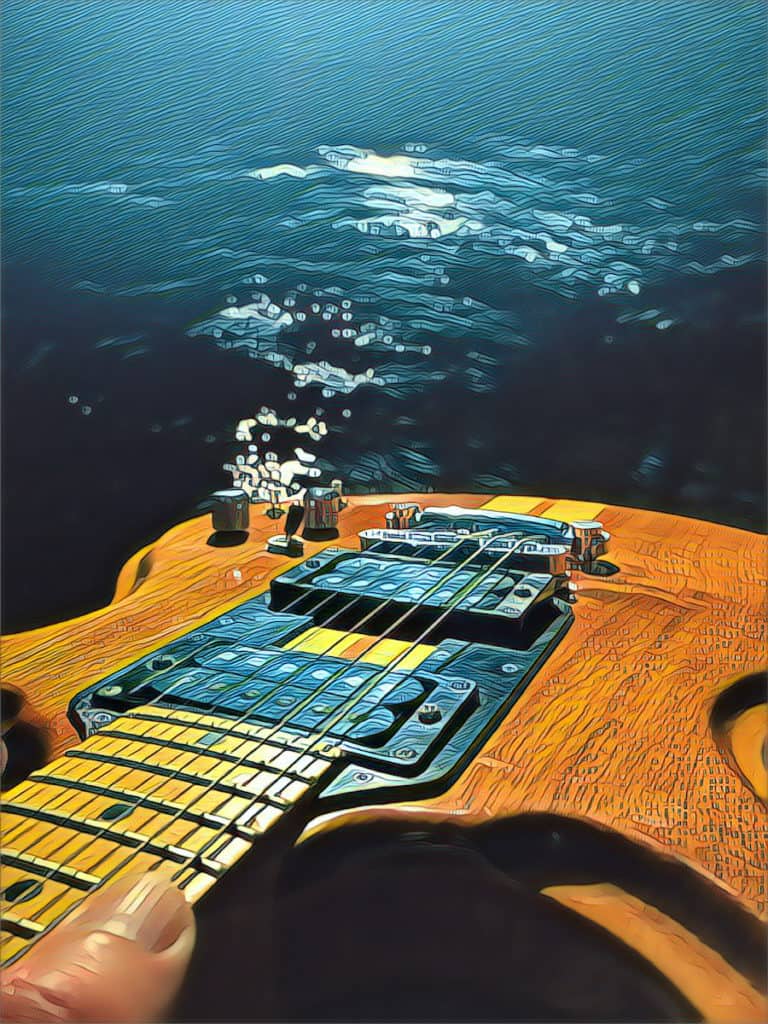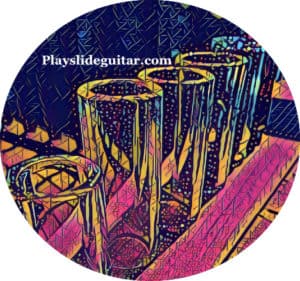As an Amazon Associate Playslideguitar.com earns from qualifying purchases. This page contains affiliate links.
If you’re interested in playing slide guitar or steel guitar, then you may be wondering what the differences are between the two instruments. Both types of guitar can produce distinct sounds that listeners are drawn to, however it can be helpful to compare the instruments to gain a deeper understanding of how they are played.
One of the main differences between slide guitar and steel guitar is that you use a slide to play slide guitar, and a tone bar for steel guitar. Also, steel guitars are usually played horizontally with the body of the guitar supported by legs or a player’s lap, while slide guitar is usually played on a regular six string guitar.
Slide guitars and steel guitars have similar playing techniques, however there are subtle differences in their tonality and how they are played. Let’s take a closer look at the differences and similarities between slide guitar and steel guitar.
The Instruments’ Physical Properties
Slide guitar is most commonly played on a regular guitar that is built for fretting notes with your fingers. However, usually the string height and action of the guitar is adjusted in some manner to make it easier to sustain notes using a slide.
There are a variety of steel guitar types with pedal steel guitar, lap steel guitar, and console steel guitar being the most common. Steel guitar is a more generic term for any type of guitar that is played with a steel bar, in a horizontal manner.
Lap steel guitars are very similar to slide guitars, however they’re designed to be played on a player’s lap instead of in an upright fashion. Pedal steel guitars evolved from the lap steel, and have foot pedals and knee levers that raise or lower the pitches of strings.

Console steel guitars are very similar to pedal steel guitars because the body of the guitar is supported by legs so that a player can sit behind it to play it, much like a keyboard player. However, console steel guitars don’t have foot pedals and knee levers, which makes them similar to lap steels in this regard.
There are types of slide guitars that aren’t designed the same as regular guitars (such as dobros, resonator guitars, and Weissenborn guitars). A Weissenborn guitar such as Gold Tone’s six-string Weissenborn (link to Amazon) can be considered a slide guitar or lap steel guitar, as it is usually played on your lap.
Playing Techniques
Both instruments use a piece of metal or glass to “fret” notes, compared to a regular guitar where you use your fingers to fret notes against the fretboard. In this way, both slide guitars and steel guitars are essentially fretless instruments in the way they are played.
Even though both instruments are played in a fretless manner, they still have fret markers to help with intonation and visually locating positions along the guitar’s neck.
Slide guitars and steel guitars require you to dampen the strings behind your bar or slide to prevent unwanted overtones from ringing out. Also, for both instruments you’ll usually need to mute any strings that aren’t being played by your picking hand to prevent them from sustaining, and making unwanted noise.
Both instruments have very expressive uses for vibrato and sliding techniques, which plays a large part in their distinct sound. A slide guitar usually utilizes a slide that is hollow and fits on a player’s finger, which makes it easier to play notes in an upright fashion.
Since you usually sit down when playing steel guitar, a solid bar is used to play along the fretboard. A player pushes down on the bar with their fingers, and gravity also helps for this playing technique so that the bar doesn’t need to be hollow (like a slide) for controlling its movement.
There are some guitar slides, such as Rock Slide’s Ariel Posen Signature Slide (link to Amazon), that are designed and shaped similarly to a tone bar. However, they’re still hollow so that you can wear it on your finger for playing slide guitar.
The Sound
Slide guitars and steel guitars have a very similar sound, however usually there are noticeable differences. Because a steel guitar often has hotter pickups and uses a bar, it’ll often have a brighter and more metallic tone. Also, players usually wear finger picks and thumb picks for steel guitar, which can add to this tonal difference.
Many slide guitarists use a glass slide, which can have a warmer tonality than other materials. It is common for slide guitarists to play with their bare fingers, which also contributes to a warmer tone than steel guitar.

However, for both instruments a lot of the sound is derived from playing techniques, the physical properties of the instrument, and the gear that is used. Some slide guitarists, especially for acoustic slide playing, use metal slides that sound more like a steel guitar bar’s tonality.
There are many recordings that have either slide guitar on them, or steel guitar, where it can be hard to discern what instrument is being played. For instance, Jackson Browne’s “These Days” has beautiful lap steel playing on it, but most listeners would think it is slide guitar being played because of the open strings and slide techniques being utilized.
You can hear this example below…
Also, keep in mind that pedal steel guitars have a distinct sound when a player uses the foot pedals and knee levers to change the strings’ pitches. This can make it more apparent to a listener that a steel guitar is being played instead of a slide guitar.
Styles of Music
Both slide guitars and steel guitars are played in many styles of music. The instruments have gained popularity in certain time eras and forms of music, however they are very adept in musical expression for any type of music.
Steel guitar was very prominent in the early 1900s, as it gained worldwide recognition when Hawaiian music was popular. Pedal steel guitar was very popular in country music of the 1960s and 1970s.
Slide guitar seems to have gained the most recognition in early blues music (where it is often referred to as bottleneck playing) and rock and roll music. Duane Allman played a large role in bringing slide guitar to mainstream rock n’ roll listeners in the 1970s, and sparked a surge in guitarists wanting to utilize the playing style for a variety of music.
Conclusion
Whether you’re interested in playing slide guitar or steel guitar, or understanding the differences between them, both instruments have a unique sound that listeners are often curious about. The emotive expressions, and vast articulations of the instruments, make them great choices for creating interesting sounds within music.
If you’re interested in learning more about slide guitar’s history, and presence on today’s music scene, check out the page below…
